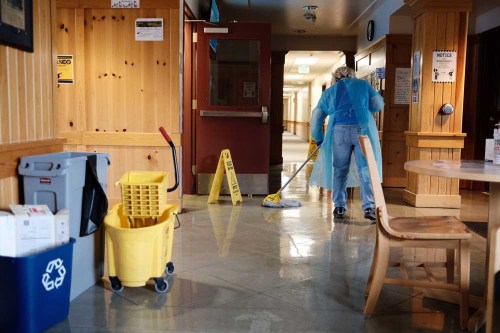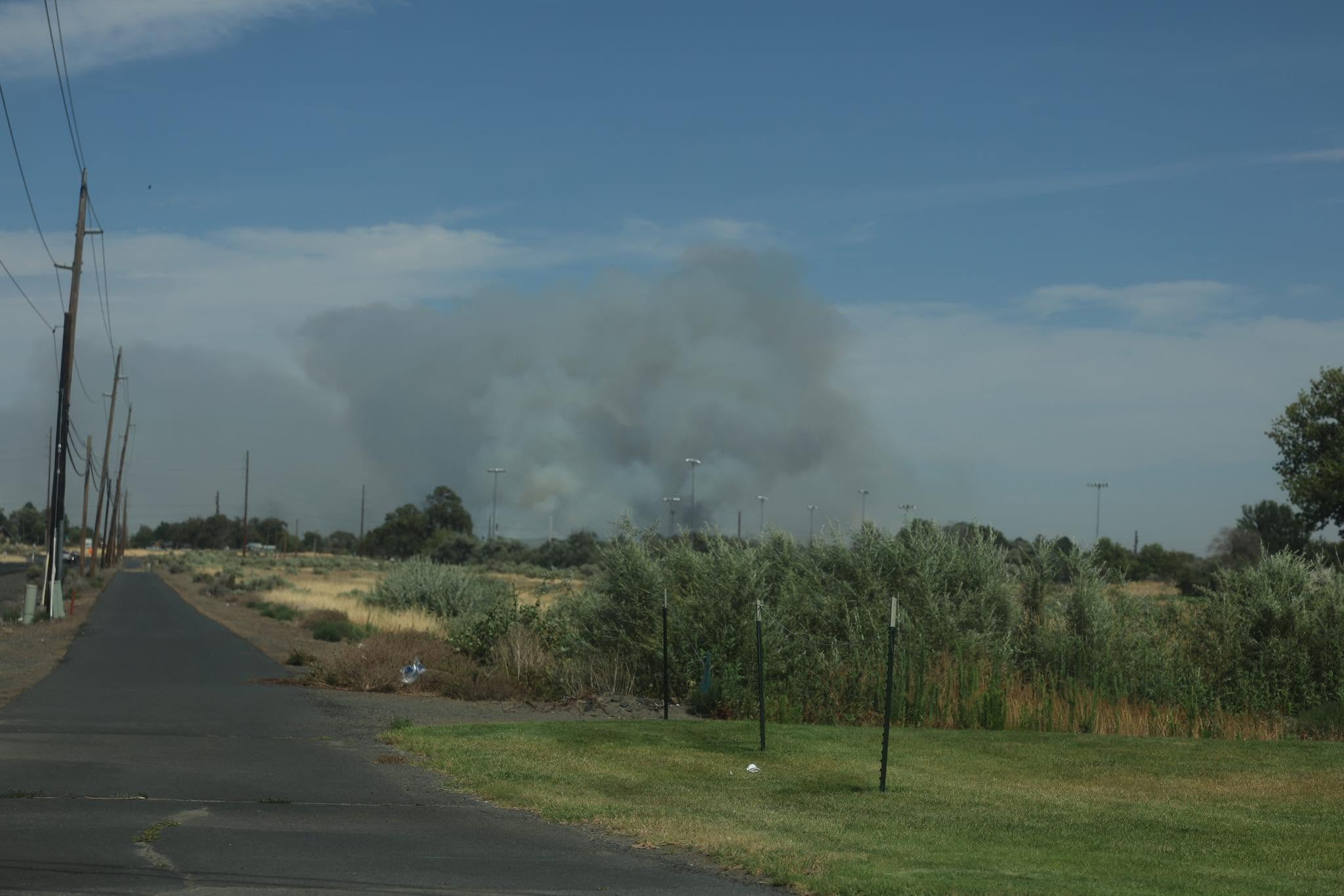2% of EOU students living on campus test positive for COVID-19
Published 7:00 am Friday, February 12, 2021

- Marcy Barlett cleans the common room at Alikut Hall, one of the residence halls on Eastern Oregon University in La Grande, on Monday, Feb. 8, 2021. Cleaning is part of the effort to keep COVID-19 from spreading among students living on campus. EOU conducted more than 1,200 tests of students for COVID-19 and found just 2% tested positive in January.
LA GRANDE — Eastern Oregon University reported COVID-19 testing of more than 1,200 students resulted in a positive rate of just 2%.
EOU in a press release reported students’ compliance with health and safety protocols allowed the university to keep case counts at a minimum while continuing operations, including providing a significant number of in-person classes and services during the COVID-19 pandemic.
Prior to the start of winter term, EOU tested all students living in on-campus residence halls for COVID-19 once during winter break, then a second time upon returning to campus. Student-athletes complete regular COVID-19 tests to continue participation in practices.
EOU conducted more than 1,200 tests in January of students living on campus, according to the press release, which resulted in that 2% positivity rate.
Dally Evans, of Lakeview, is a freshman living on campus at Eastern. The elementary education major credited the university for steps to control the spread of coronavirus.
“I think EOU is doing a great job with it,” Evans said.
When students started the school year in the fall, she said, they had to quarantine for three days, “then we did a mass testing on the football field.” After that, she said, came a few more days of quarantining, and before winter break the university provided students with testing kits to take home and mail in.
Heather Wiggins, director of EOU’s Student Health Center, also is a family nurse practitioner and a faculty member at Oregon Health & Science University in Portland. She said large-scale testing provides important information to reduce the spread of COVID-19.
“At least 40% of the spread of COVID is through asymptomatic or presymptomatic individuals, who either are already ill and do not have any symptoms or have not yet developed symptoms,” Wiggins said in the press release. “Frequent large-scale testing is one measure that can help reduce the risk of an outbreak spreading quickly. … This type of testing is especially important when students are returning to campus from many different areas after winter break, and may have been unknowingly exposed, or are already infectious but are not showing any symptoms.”
Carrie Brogoitti, COVID-19 incident commander at Union County’s public health authority, the Center for Human Development Inc., said the organization has a longstanding, positive relationship with EOU that has helped mitigate the spread of COVID-19 locally.
“Of all the places in our community where there could be risk of spread or potential outbreaks, EOU has done a tremendous job of being proactive,” Brogoitti said in the release. “They have great plans in place and have been swift to act in isolating and quarantining COVID-19 cases to limit or stop the spread in our community. They have really taken it seriously and have worked really hard to limit the risk to their students and the community.”
She said EOU helped inform and coordinate many aspects of the pandemic response, and the university’s presence in La Grande is not a primary reason for the county’s “extreme risk” status.
“Over the last year we have seen COVID-19 activity and outbreaks touch almost every area of our community. In many of these instances, to the best of our knowledge, this activity has been community spread,” Brogoitti said. “EOU has coordinated their testing events with public health and these testing events have led to identification of cases, quick treatment, and immediate isolation to prevent spread.”
EOU’s systems contained a minor outbreak in mid-January after students who had tested negative began experiencing symptoms, EOU reported. Contact tracing found no employees or shared spaces were exposed. EOU assigned each affected student a caseworker to provide wrap-around services. And a newly hired COVID-19 response nurse provided direct care and consultation for the students.
Wiggins said Easter’s COVID-19 case management team is there to ensure students have the support they need.
“The response nurse is on the team along with representatives from student affairs, residence life, the student health center and the athletic department. This team meets routinely to help provide support to all students who are in isolation or quarantine,” she said.
Faculty also provided remote-access resources for students since the pandemic began in spring 2020. Adapting in-class curriculum to suit remote and hybrid courses also allows students to self-isolate or quarantine if they are ill or potentially exposed to the virus.
Evans said in the fall she had two classes online and four in person, but her roommates that term were taking all their courses online.
The first week of classes for winter term were all online, she said, but now she has three online and two in person. Evans said she finished her high school classes all online, so she and other freshmen are used to this.
“I don’t mind online, but I don’t feel I’m getting the best education,” she said.
Face covering requirements, physical distancing measures and daily health checks also contributed to the university’s ongoing capacity to offer in-person instruction. Free COVID-19 tests are available to students experiencing COVID-19 symptoms or who have been in contact with a positive case.
How well EOU is handling the virus is not a big topic of conversation with Evans and her roommates, she said, maybe because by now students are getting use to the circumstances.
Looking ahead to spring term, Evans said she does not see much change in the mix of online and in-person classes. She said two of her classes for spring term already are hybrids of online and real class time.
”Hopefully in the fall,” she said, “we’re back to in-person, though.”
“Of all the places in our community where there could be risk of spread or potential outbreaks, EOU has done a tremendous job of being proactive.”
— Carrie Brogoitti, Union County’s COVID-19 incident commander









